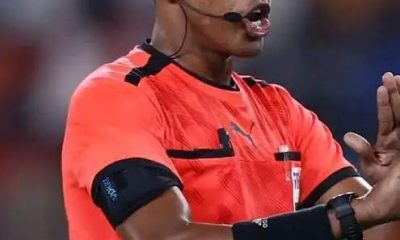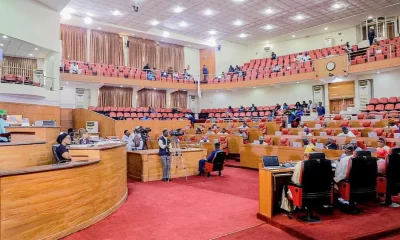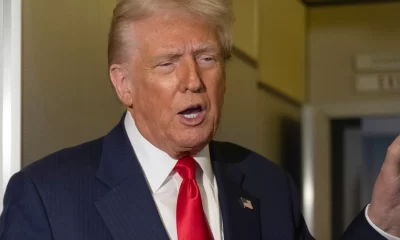Health
Uproar over $220.5m funding of COVID experiments to hide human manipulation of laboratory-created super viruses
Published
3 years agoon

There is rising uproar over why the National Institutes of Health would fund experiments by University of North Carolina of Chapel Hill professor Ralph Baric to develop a technique for hiding evidence of human manipulation of laboratory-created super viruses.
The National Institute of Allergy and Infectious Diseases (NIAID) was said to be supported with $229.5 million funding, which enabled Baric to develope a so-called “Seamless Ligation” technique, which he boasted could perfectly conceal all evidence of human tampering in laboratory-created viruses. Baric had called his manipulative invention the “no-see’m” method.
Many scholars have protested that a new study “Endonuclease fingerprint indicates a synthetic origin of SARS-CoV2,” published on the preprint server bioRxiv, shows that, apparently unbeknownst to Baric, the “seamless ligation” concealment gimmick leaves its own minute but legible signature.
Most momentously, these same researchers were said to have discovered that damning signature in the genome of the virus that causes COVID-19.
It was indicated that Baric’s technique has long been controversial.
Jeffrey Sachs, chair of The Lancet COVID-19 Commission, a task force that investigated the origins of COVID-19, was cited to have declared: “It’s the artist that doesn’t sign his name to the painting; the virologist that doesn’t put his signature into the virus to let us know whether or not it is emerging naturally or whether it is produced in a laboratory.
“All of it says, my God, there was really a big, very risky research agenda underway.”
Sachs had published the results of his 22-month investigation in The Lancet, including the damaging conclusion that COVID-19 was probably laboratory-generated and that the technology probably came from NIH-funded science.
Also, reviewing Baric’s seamless ligation methodology, evolutionary biologist Bret Weinstein had stated: “It’s the exact opposite of what you would do if your interest was public health. Public health scientists would be marking their enhancements with red flags, not devising ways to hide them. The only reason you would want a concealer is to advance a sinister purpose, such as illegal bioweapons development, some mischief that the scientist didn’t want traceable back to his lab.”
Moreover, Shi Zhenghli noted in 2016 that Baric taught his “no-see’m” method to the Wuhan Institute of Virology’s (WIV) “Bat Lady.”
It was revealed that in return, Baric received Chinese coronaviruses collected by Shi from bats in Yunnan province. (Scientists have linked the COVID-19 genome’s pedigree to closely related bats.)
Shi and her colleagues at the Wuhan Institute subsequently demonstrated their mastery of Baric’s high-risk technique in a series of published and highly controversial gain-of-function experiments at the Wuhan lab.
It has been even more puzzling to critics that Baric, again with NIAID funding, chose to share this dangerous technique for weaponizing pathogens with Chinese scientists who have clear links to the Chinese military.
Experts said that the implications of this new study could be far-reaching. “By pointing the finger at Baric, the study raises the possibility of potentially devastating liability for the NIAID and the University of North Carolina and other parties”, experts declared.
It was disclosed that scientists, including those close to Dr. Anthony Fauci, , have repeatedly pointed out that SARS-CoV-2, the virus that causes COVID-19, has genomic sequences that appear inconsistent with natural evolution: The COVID-19 virus, they argued, is no longer infectious in bats, and its spiked protein feature, which is unknown in this family of coronavirus, includes numerous mutations that make it ideally infectious in humans.
They stated that the closest known coronavirus relative, a coronavirus from the Wuhan lab, is 96.2% identical to SARS-CoV-2. The peculiar spike, they said, accounts almost completely for the entire 3.8% difference. Oddly, there are multiple novel mutations in the spike and almost none in the rest of the genome.
They noted that natural evolution would be expected to leave mutations distributed evenly across the genome. The fact that virtually all the mutations occur on the spike led these scientists to suspect that that particular Wuhan lab coronavirus collected by Shi Zhengli is the direct progenitor of SARS-CoV-2 and that its new spike was implanted through engineering.
The scientists maintained that however, the unmistakable fingerprints of lab engineering were absent, leaving many experts wondering whether Baric’s technique was used to assemble a novel coronavirus with the engineered spike while removing the evidence of lab generation.
The new study was said to connects the biological breadcrumbs that link federally funded research to a global pandemic. That trail leads directly to UNC and NIAID.
The authors of the study, a team of researchers from Duke University, University Clinics of Würzburg and an industry group, identified a characteristic signature in the amino acid code. That indelible artifact could only have emerged from Baric’s “no-see’m” methodology.
Baric, himself, had In an interview last spring, confessed, that at the time the pandemic began, only two or three labs in the world were using his protocol, including his UNC lab and the WIV.
The study’s authors’ conclusions rest on the presence of unique sites in the COVID-19 virus. These sites allow special enzymes called “restriction enzymes” to cut the DNA into building blocks of unique size that then can be “stitched together in the correct order of the viral genome,” according to the study’s authors.
Essentially, Baric’s technique leaves behind unique spellings in the “genetic vocabulary.” The new words include “odd spelling choices” subtly distinguishing them from typical viral vocabulary.
The magic of Baric’s “no-see’m” technique is to invisibly weave these telltale “spelling” changes into the viral sequence between relevant genes without altering the viral protein. This is like changing the “spelling” of the word without changing its meaning; the casual listener will never notice the difference.
The research team used forensic tools to drill down on minute “spelling differences” in the SARS-CoV2 genome that betray laboratory tampering using the “no-see’m” technique.
Trending

 Football1 week ago
Football1 week agoAFCON 2025 shock: CAF sacks referee hours before Algeria–Nigeria quarterfinal

 News6 days ago
News6 days agoLagos passes ₦4.44t as Y2026 budget

 Latest1 week ago
Latest1 week agoBaba-Ahmed: Obi has not defected to ADC

 Latest1 week ago
Latest1 week agoTrump threatens more U.S. military strikes in Nigeria over alleged attacks on Christians

 Business6 days ago
Business6 days agoKPMG clarifies position on Nigeria’s new tax laws

 Business1 week ago
Business1 week agoMTN Executive buys N40.9m shares as strong earnings boost stock

 Business1 week ago
Business1 week agoNAJA honours Osanipin, Ajayi as Nigeria’s auto personalities of the year

 Football7 days ago
Football7 days agoSuper Eagles target AFCON semi-final spot as Nigeria face Algeria in quarter-final showdown

